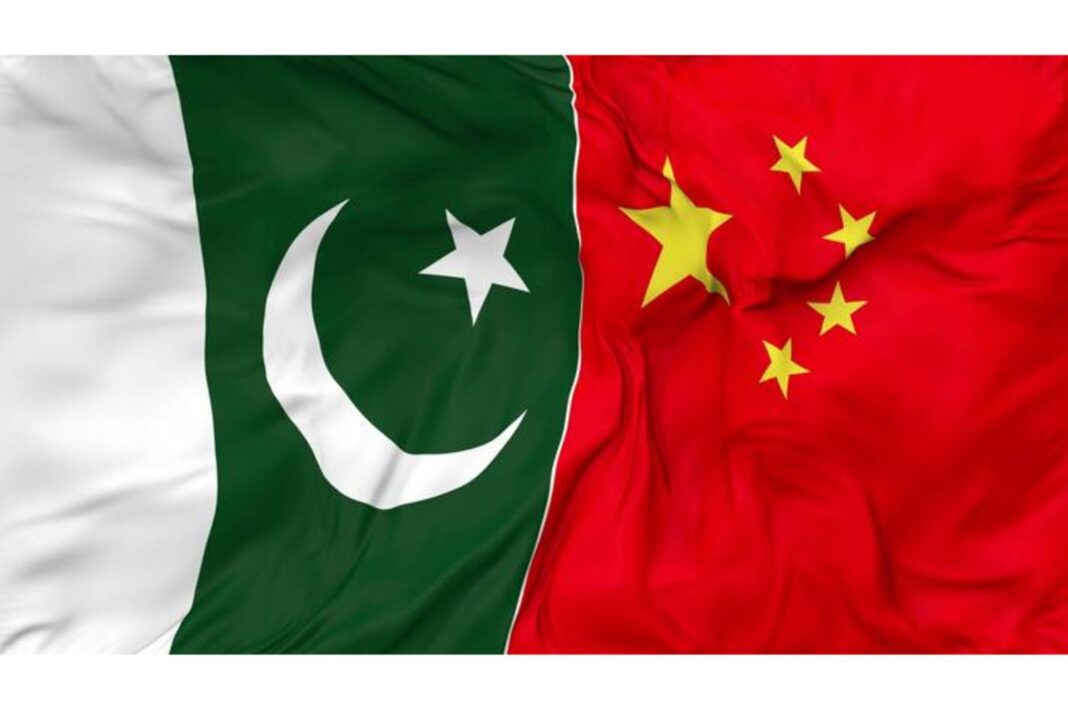Pakistan, a country mired in economic troubles, socio-political instability, and sectarian violence, has long professed a first-strike nuclear policy against India. Therefore, reports of Pakistan seeking second-strike capability from China in exchange for allowing Beijing to build a military base in the port city of Gwadar seem strange. According to a report in Drop Site News by Murtaza Hussain and Ryan Grim, China has rejected Pakistan’s request. The report additionally states that Islamabad also wants Beijing to indemnify it against any potential Western political and economic sanctions in the future. Is Gwadar Port being used as a bargaining chip by Pakistan to leverage greater economic aid and assistance from China?
China and Gwadar Port
Formal talks between Pakistan and China over the latter having a permanent presence in Gwadar are said to be currently underway, with Islamabad seeking economic guarantees from Beijing against possible future Western sanctions or economic blockades. Pertinently, Gwadar Port, built primarily with Chinese funding in the form of grants, serves as a vital component of China’s strategic interests in the form of the China-Pakistan Economic Corridor. Beijing’s primary objective has always been to set up a naval port at Gwadar for its vessels to operate and resupply and as a staging post in the Western Indian Ocean. Notably, while Pakistan has been reluctant to publicly acknowledge China’s plans to establish a naval base at Gwadar, it is widely accepted that this will eventually become a reality. Reports indicate that Pakistan has already begun the process towards this objective.
Pakistan has, from time to time, justified the dredging of Gwadar Port by citing the need to permit Chinese vessels to dock. Privately, Pakistan realises the strategic value of a Chinese naval presence in the Western Indian Ocean to counterbalance any Indian presence. Islamabad thus realises the advantage of a PLA Navy’s presence in the region given the wider regional situation prevailing in the Middle East today. Given this scenario, the request for a second-strike capability in return for a base in Gwadar appears to be a bargaining chip. Pakistan has always wanted more and is trying to extract the maximum from China, in return for permitting Beijing to build a naval base in Gwadar.
For decades, China has been assisting Pakistan build its nuclear arsenal, including the transfer of weapons designs and missiles. In fact, some analysts suspect that China has provided Pakistan with tactical nuclear weapons (TNW). Given multi-faceted strategic cooperation between China and Pakistan, under the umbrella of which Beijing has already equipped Pakistan with the wherewithal for full-spectrum nuclear deterrence, the question arises: would Pakistan truly make such a bold demand, especially in exchange for China constructing a military naval base in Gwadar?
Second-strike capability is underpinned by a nation’s ability to withstand a first strike by an adversary and retaliate causing substantial damage in riposte. Pakistan’s nuclear deterrence and warfighting strategy exists to offset India’s conventional and nuclear capabilities. Unlike India, Pakistan has never professed a ‘no-first use’ nuclear policy, leaving the door open for a first strike. Lt Gen Khalid Kidwai (retd), former director-general of Pakistan’s Strategic Plans Division, had identified (in the early 2000s) four red lines in which Pakistan could use nuclear weapons first: territorial losses, economic collapse, military attrition, and regime instability. However, over time, Pakistan’s nuclear doctrine has evolved to full-spectrum deterrence, primarily in response to the growth of India’s nuclear posture and capabilities.
Full-spectrum deterrence posture
Full-spectrum deterrence means having the ability to use nuclear weapons in all domains. With substantial Chinese assistance, Pakistan is in the process of acquiring such a capability in terms of both weapons and delivery platforms. India, of course, remains the primary strategic concern for Pakistan. Today, the war in the Middle East and lessons from the Russia-Ukraine conflict have made Pakistan wary of the situation it could face in the future. However, as the 2016 Carnegie Endowment for International Peace paper argues, India has not only increased its nuclear arsenal, but also diversified the platforms from which it can deliver nuclear weapons. Additionally, the Ballistic Missile Defence programme gives an extra layer of protection against Pakistan’s missiles and other platforms. Therefore, Pakistan has shifted stances over time to prepare itself for any eventuality.
Rauf Khalid, in an article in Paradigm Shift, argues that Pakistan’s pursuit of second-strike capability mainly refers to the acquisition of nuclear submarines. The Babur-3 nuclear-capable cruise missile, with a range of 450 km, needs a sea-based platform. But recall that Pakistan could still use its Shaheen-III missile with a range of 2,750 km for a second strike—or even for a first strike. Notably, India continues to adhere to its ‘no-first-use’ nuclear policy. The only reason for Pakistan, therefore, to seek second-strike capability is an assessment that India has quietly shifted its warfighting strategy in the realm of nuclear conflict. Pakistan’s demand from China, therefore, is for nuclear capability of a much higher order, which is more powerful and destructive. The authors of the Drop Site News report have argued that China is worried about its reputation as a nuclear weapon state and its commitment to the Treaty on the Non-Proliferation of nuclear weapons.
The international community knows fully well that China has for long violated international law and been a regular nuclear proliferator to both Pakistan and North Korea. So, clearly, Beijing would have no compunctions to give Pakistan more nuclear weapons, if it serves its interests. Let’s be clear about that.
As of 2022, the Center for Arms Control and Non-Proliferation estimated that Pakistan had 170 nuclear warheads. Based on Pakistan’s 1998 nuclear tests, its [current warheads have yields ranging from 5 to 12kilotons (kt). Lest we forget, Pakistan also has tactical nuclear weapons and may already have warheads with yields of up to 40 kt, likely supplied by China. Given this situation, it seems there is more than meets the eye to Pakistan asking China for second-strike capability. For now, it can only be said that it is a bargaining chip for Pakistan to extract more from China in return for granting access to Gwadar Port.

